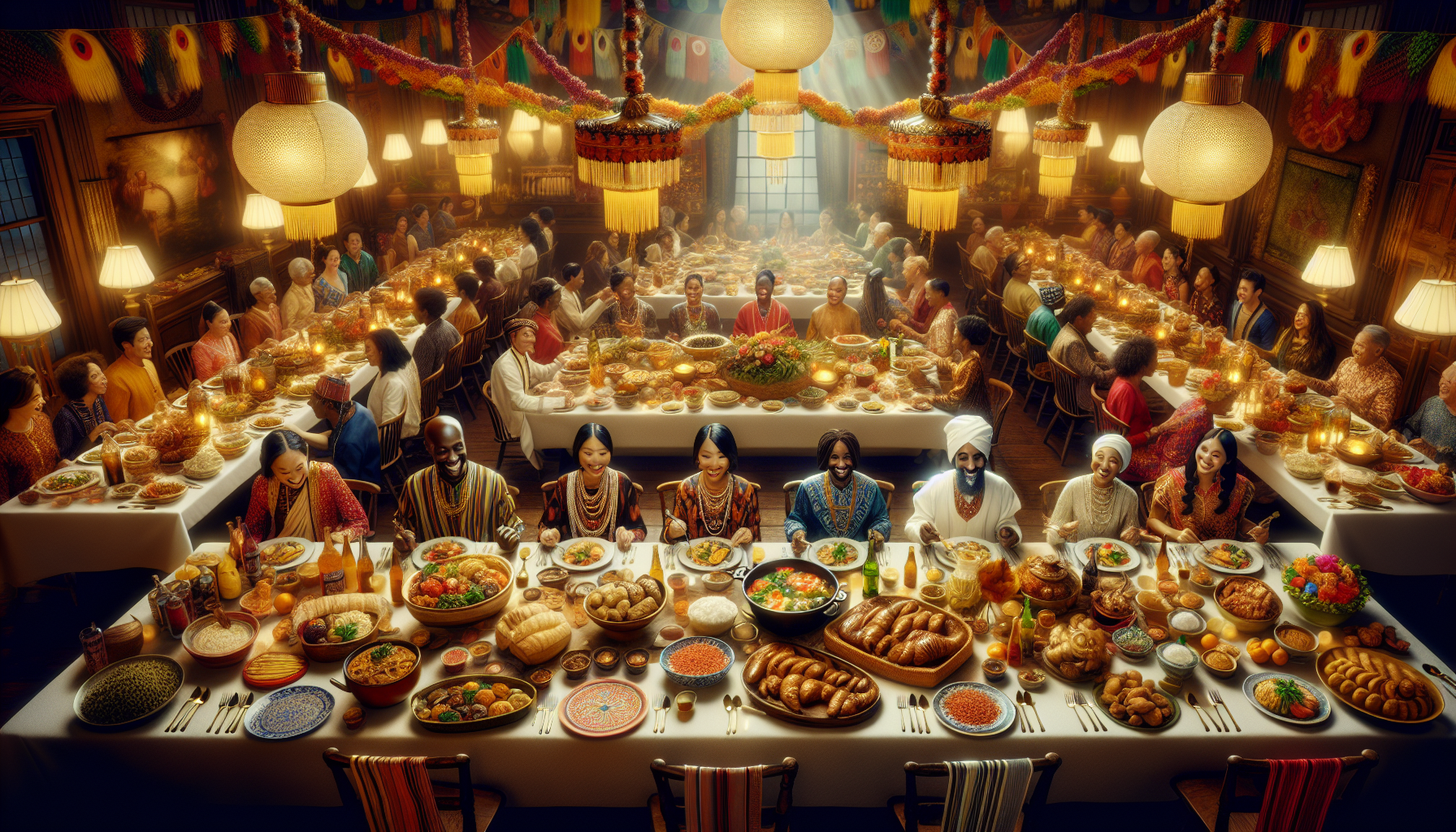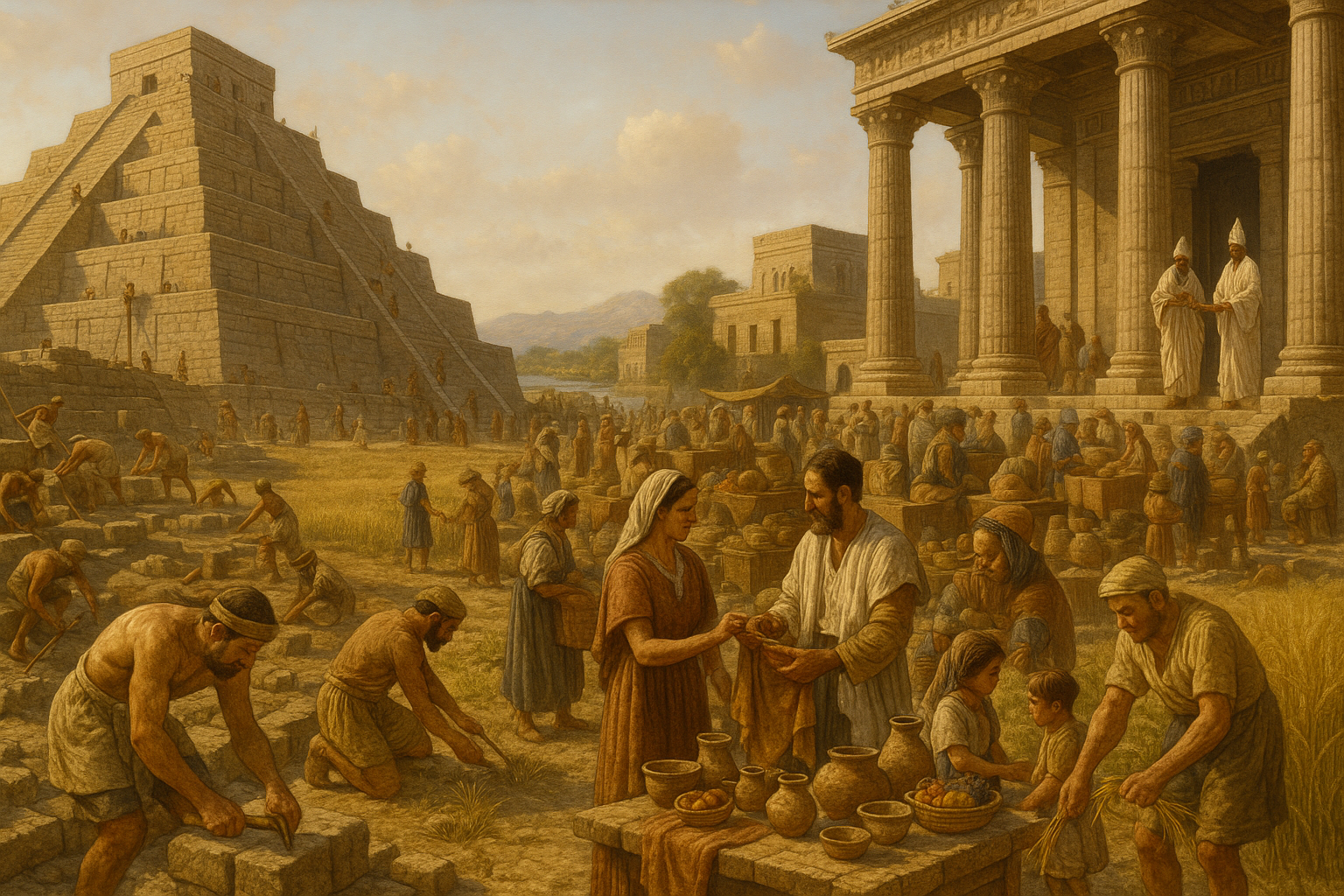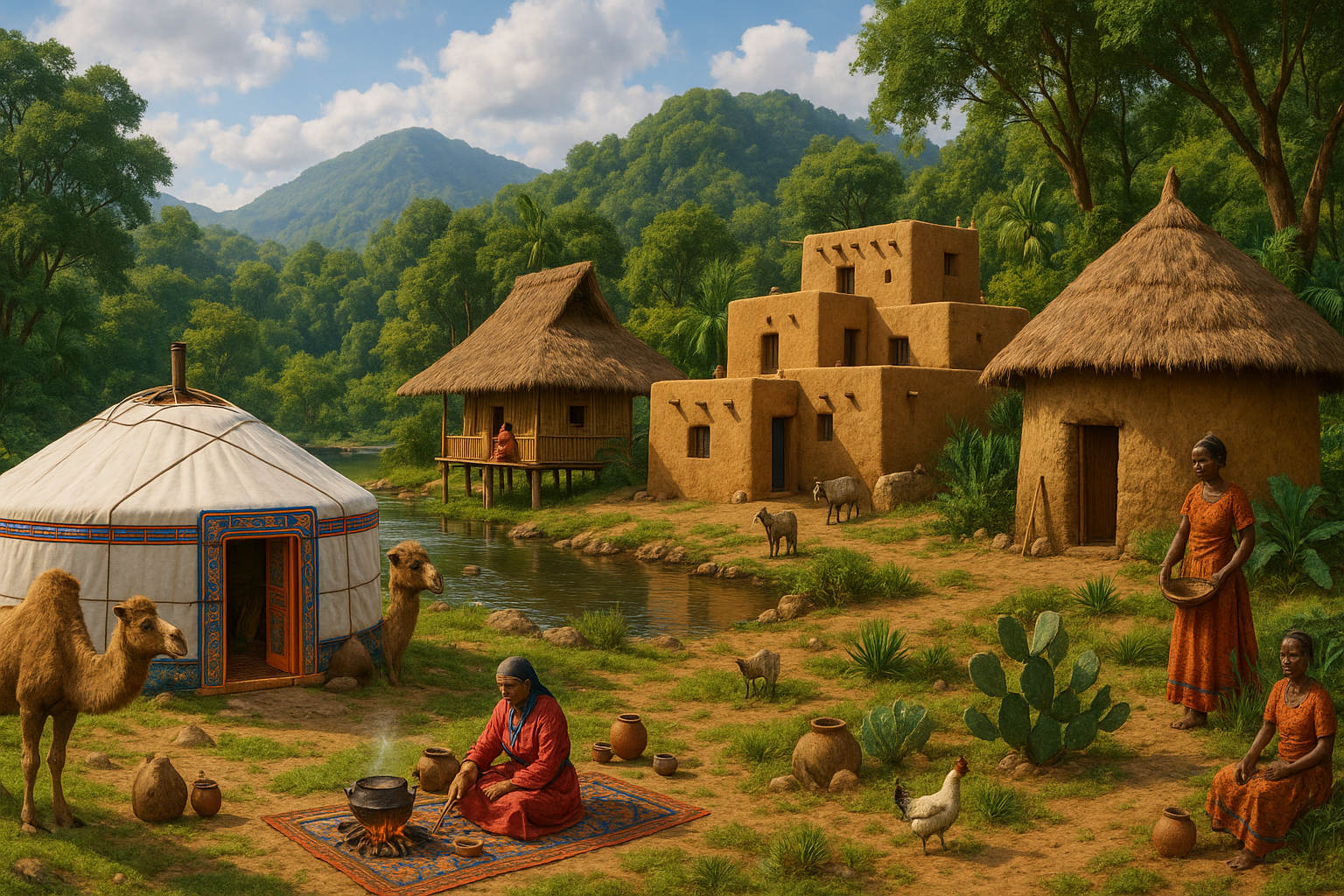In the vibrant tapestry of cultural celebrations around the world, food stands out as a universal symbol of tradition, unity, and expression. From the aromatic spices of Indian Diwali feasts to the savory indulgence of Thanksgiving dinners in the United States, culinary elements are deeply woven into the fabric of traditional festivals. This exploration dives into the symbolic significance of food in these celebrations, unraveling how each dish tells a story of heritage and communal identity.
Throughout history, festivals have used food not just as sustenance, but as a canvas for storytelling and symbolism. Each festival, with its unique set of dishes, serves as a window into the values and history of a culture. Whether it’s the vibrant colors of a Chinese New Year banquet or the comforting aromas of Eid al-Fitr sweets, the food often mirrors the essence of the festival it represents. This article will take you on a journey through various cultures, highlighting how these culinary traditions convey messages of hope, gratitude, and renewal.
Join us as we uncover the layers of meaning behind each festive meal, exploring the ingredients, preparations, and rituals that transform simple dishes into powerful cultural symbols. Discover how, beyond flavors and aromas, food becomes a vessel of cultural continuity and a beacon of collective celebration across the globe. This feast for the senses promises not only to tantalize your taste buds but also to deepen your appreciation for the rich, symbolic world of festival cuisine. 🌍🍲
The Cultural Significance of Food in Festivals
Food holds a central role in cultural celebrations around the world. Traditional festivals often use food not only as a means of sustenance but also as a medium to convey deeper meanings and symbolisms. The type of food served, the way it is prepared, and the rituals associated with its consumption can provide insights into a culture’s values, beliefs, and history.
In many cultures, food represents abundance and prosperity. For instance, during the Chinese New Year, families prepare a lavish spread of dishes, each symbolizing good fortune and luck for the coming year. Dishes like dumplings are crafted to resemble ancient Chinese currency, signifying wealth. Similarly, in the Indian festival of Diwali, sweets and desserts are abundantly prepared, symbolizing the sweetness and joy of life and the triumph of light over darkness.
Food in festivals also plays a role in reinforcing social bonds and community ties. Sharing a meal is a universal gesture of hospitality and unity. In Thanksgiving celebrations in the United States, the communal feast serves as an opportunity for families and friends to come together and express gratitude. The act of preparing and sharing food helps to strengthen relationships and foster a sense of belonging.
Symbolic Foods in Religious Festivals
Religious festivals frequently incorporate foods with deep spiritual meanings. These foods often reflect the teachings and narratives central to the religion. For instance, during the Jewish festival of Passover, unleavened bread, or matzo, is eaten to commemorate the Israelites’ hasty exodus from Egypt when they did not have time to let their bread rise. This unleavened bread serves as a reminder of freedom and deliverance.
In Christianity, the breaking of bread during communion rituals symbolizes the body of Christ, reinforcing the concepts of sacrifice and redemption. Easter, another significant Christian festival, often features eggs, which are emblematic of new life and resurrection. These foods are imbued with religious significance, reminding participants of the core tenets of their faith.
Islamic festivals, such as Ramadan, place importance on dates and water to break the fast, reflecting the practices of the Prophet Muhammad. The act of fasting and subsequently breaking the fast with specific foods helps Muslims develop empathy for the less fortunate and reinforces their spiritual commitment.
The Role of Food in Celebrating Nature and Seasons
Many traditional festivals are aligned with natural cycles and seasons, using food to mark these transitions. The harvest festivals, celebrated globally, are prime examples of this connection. These festivals often feature dishes made from freshly harvested crops, symbolizing gratitude for the bounty of the earth.
In Japan, the Cherry Blossom Festival, or Hanami, marks the arrival of spring. People gather to enjoy the fleeting beauty of cherry blossoms, accompanied by seasonal delicacies like sakura mochi, a pink rice cake wrapped in cherry blossom leaves. These foods embody the transience and beauty of nature, encouraging participants to appreciate the present moment.
The autumnal festival of Thanksgiving in North America highlights the importance of the harvest. Traditional dishes such as pumpkin pie, turkey, and cranberries are prepared using seasonal ingredients, reflecting the harmony between humans and the natural world. These foods serve as a reminder of the earth’s abundance and the importance of sustainable living.
Food as a Medium for Storytelling and Tradition
Through traditional festivals, food becomes a powerful tool for storytelling and the preservation of cultural heritage. Each dish tells a story, often passed down through generations, that encapsulates historical events, familial traditions, or local folklore. In Mexico, during Dia de los Muertos, families prepare ofrendas, or altars, adorned with foods like pan de muerto, a sweet bread shaped like bones. This food not only nourishes but also serves as an offering to honor deceased loved ones, keeping their stories and memories alive.
In the Italian festival of Ferragosto, celebrated in mid-August, food plays a crucial role in recounting the region’s history. Traditional dishes like porchetta, a savory roasted pork, highlight the agricultural and culinary practices of the past. The preparation and enjoyment of such foods connect people to their roots, reinforcing cultural identity and pride.
Food also acts as a bridge between past and present. In the Korean festival of Chuseok, families prepare a table of traditional dishes such as songpyeon, half-moon shaped rice cakes, as an expression of gratitude to ancestors. This practice not only honors familial lineage but also ensures that cultural narratives continue to be shared and celebrated with each generation.
Tables and Lists in Traditional Festivals
Traditional festivals often involve a variety of dishes, each with its own unique symbolism and preparation methods. Here is a brief look at some iconic festival foods from around the world and what they represent:
| Festival | Food | Symbolism |
|---|---|---|
| Chinese New Year | Dumplings | Wealth and prosperity |
| Passover | Matzo | Freedom and deliverance |
| Easter | Eggs | New life and resurrection |
| Thanksgiving | Turkey | Gratitude and abundance |
- Feasts serve as a communal activity, fostering a sense of unity.
- Seasonal ingredients reflect the connection to nature.
- Traditional recipes preserve cultural narratives and history.
These foods and their associated festivals highlight the deep connections between culinary practices and cultural expressions. Whether through shared meals, symbolic dishes, or storytelling, food continues to play an essential role in celebrating and preserving traditions around the world.

Conclusion
In conclusion, food plays an undeniably significant role in traditional festivals, transcending mere sustenance to become a symbol of cultural identity, community, and history. These culinary practices are imbued with layers of meaning, often reflecting a society’s values, beliefs, and connections to nature. Importantly, food serves as a medium for storytelling, keeping alive the narratives of generations past. For example, the preparation of dumplings during the Chinese New Year not only signifies wealth and prosperity but also acts as a living tradition that brings families together. Similarly, the consumption of matzo during Passover symbolizes freedom and deliverance, echoing the historical journey of the Israelites.
Moreover, these festivals often highlight the importance of community bonds and gratitude. The act of sharing a meal, as seen in Thanksgiving, reinforces social ties and collective appreciation. Furthermore, the emphasis on seasonal ingredients celebrates the harmony between humans and the natural world, reminding us of our dependence on and gratitude for the earth’s bounty.
In essence, traditional festival foods are more than just dishes; they are vessels of cultural heritage and unity, offering a feast for the senses and the soul. As we partake in these celebrations, we are reminded of our shared humanity and the timeless traditions that continue to bind us together across generations and geographies. 🍽️
Toni Santos is a visual storyteller and experimental artisan whose work explores the strange frontiers where science meets art. Fascinated by the forgotten, the obscure, and the wonderfully absurd, Toni brings bizarre scientific experiments to life through provocative visual narratives and handcrafted creations that blur the line between curiosity and discovery.
His journey is rooted in a passion for the eccentric side of science — from electric shocks on cadavers to botany in hostile environments, from Victorian medical oddities to animal behavior gone rogue. Each project Toni undertakes sheds light on real (and sometimes questionable) scientific ventures that push the boundaries of human understanding.
With a background in visual design and hands-on craftsmanship, Toni blends artistic precision with conceptual boldness. His creations aren’t just decorative — they provoke, disturb, and invite the viewer to reconsider what counts as science, progress, or even sanity. Often inspired by true experiments — like galvanic resurrection, psychological endurance tests, or 19th-century pseudo-science rituals — Toni’s work reanimates these bizarre chapters of history with aesthetic intrigue and critical reflection.
As the creative force behind Vizovex, Toni invites you to explore a world where the strange becomes symbolic, the grotesque becomes beautiful, and every experiment tells a story worth unearthing.
His work pays tribute to:
The brilliant madness of forgotten experiments
The symbolic power of science at the edge of reason
The beauty in questioning what we think we know
Whether you’re a curious mind, a lover of scientific history, or simply drawn to the uncanny, Toni welcomes you to explore a realm where aesthetics and absurdity collide — one experiment, one mystery, one creation at a time.





